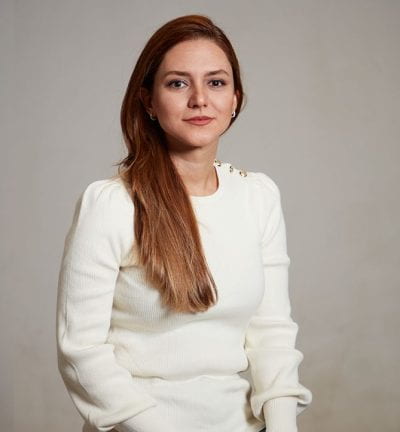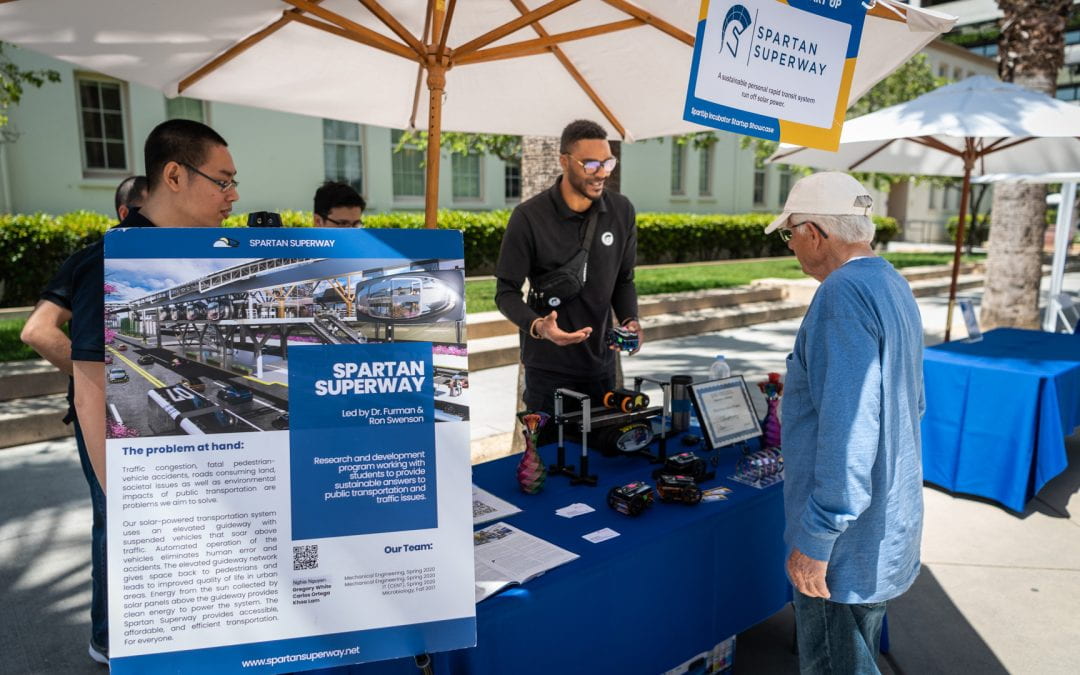Expressions Presents: Marjan Khatibi: Experiencing Empathy in Virtual Reality
This article was originally published by the College of Humanities and the Arts in the winter 2023 edition of Expressions, a newsletter created by students in HA-187: Creative Team Practicum. The internship course gives students the opportunity to gain professional experience in writing, graphic design, photography, and video production.

Khatibi encourages activism through the creative arts and is aware of her power as a creator.
Khatibi was first influenced by Disney films for her works–but not in the way you might expect. Since she was young, she remembers how strange it was that every Disney princess she would watch was always represented as a damsel in distress. She now approaches this issue of gender equity, specifically misogyny, through the use of virtual reality. Through VR, she believes she can address the inherent misogyny in the representation of women and other societal issues. Khatibi believes that VR can connect people to different experiences and further enhance narratives through its immersion. Additionally, Khatibi also explores different creative mediums to further enforce her wish for societal changes within gender equity and issues regarding marginalized communities, “As designers, we have the responsibility to be advocates for those who go unheard or do not have a voice,” she says.
Currently, design has opened new paths for people to create new methods of communicating these societal issues to others. With this fundamental idea, Khatibi creates virtual environments that allow participants to be active in the situation she is addressing. “The immersive environment makes them feel more empowered and empathetic with the topics that they are experiencing,” Khatibi says. With the immersion of VR, she believes that her viewers will be more willing to push for societal change. Communication and inducing empathy are some of the other main factors Khatibi considers when creating her work.
One of her pivotal works focuses on the Afghanistan crisis, Khatibi created an immersive 360-degree environment that her viewers could view through the Oculus Quest 2. A two-minute-long experience, it puts the participants in the environment to display the horrific things the victims had to experience and do for survival. “This experience is immersive journalism and puts participants in the middle of a crisis,” Khatibi explains. It uncovers “whether participants would be silent if they were one of the victims in the middle of the tragedy or if they would have empathy for the victims.”
Khatibi uses Nonny de la Peña’s phrase “the duality of presence” as the main theme for her works. Creating a sense of being present within these virtual spaces allows the subjects to become fully immersed in the issues Khatbi presents. By communicating these issues through VR, Khatibi hopes to induce empathy within her viewers, resulting in influencing them to create societal changes towards misrepresentation and gender equity on their own. Khatibi’s virtual reality allows users to experience situations they would not be able to in real life. “My work offers a unique opportunity to create a space that is otherwise unattainable in the physical world,” she says.
With so many variations of how design and animation can be used, it allows for a wider representation of diverse audiences. With the storytelling aspects of the creative arts, Khatibi urges students to become the voice of their community. “Creative design and innovative language allow us to communicate those sensitive topics with people globally,” Khatibi says. One of her current projects, Shaping Interactions, is a workshop that centers on how media representations of the Middle East have negatively affected the public’s perception. By discussing the stereotypes and then creating a design to put onto tote bags based on these negative influences, the students can carry a physical medium of raising awareness on this issue.
Being a designer, Khatibi explains that she and others like her can be advocates for change. As she produces these creative pieces, she hopes that her messages are spread globally to drive societal change and influence others to do the same. Khatibi encourages activism through the creative arts and is aware of her power as a creator. “Through design, visual language, VR, AR, and animation — I always wanted to use my art as a voice for my people,” Khatibi says.




